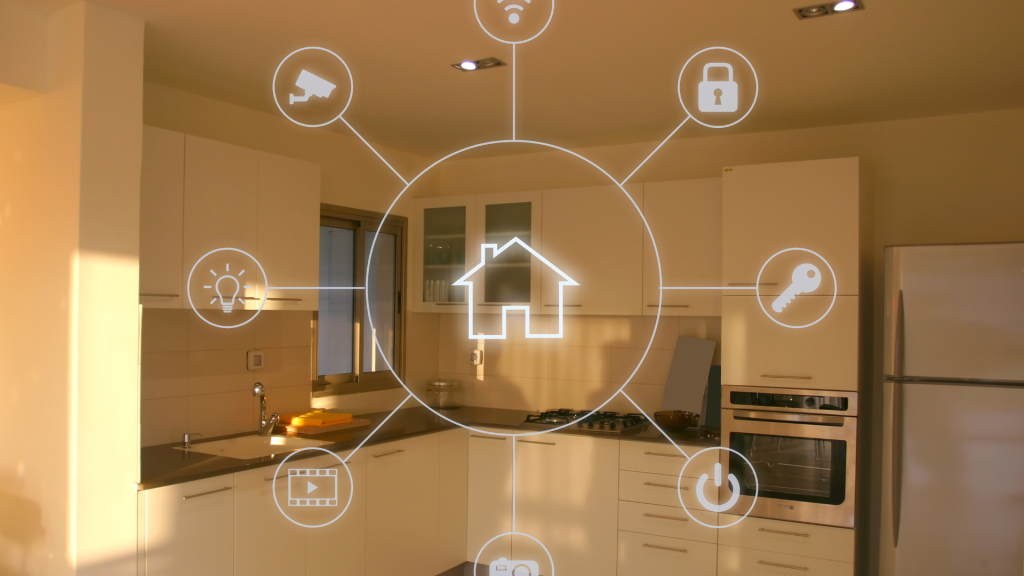Imagine a home that not only responds to your voice but also supports your hearing needs—flashing a light when someone’s at the door, sending a vibration to your wrist when the smoke alarm goes off, or streaming crisp, clear TV sound directly to your hearing aids. This is no longer science fiction. It’s the reality of today’s smart homes integrated with hearing assistive technology.
As smart home systems become more advanced and accessible, they’re proving to be especially beneficial for individuals with hearing loss. These technologies are helping bridge communication gaps, boost safety, and promote independence—especially for older adults and those with moderate to profound hearing impairment.
In this article, we’ll explore how smart home integration is transforming the way people with hearing loss experience their daily lives. From hands-free voice control to customized alerts and seamless audio streaming, discover how your home can become your ally in better hearing and living.
Understanding Smart Home Technology
Smart home technology refers to a network of internet-connected devices that allow users to automate and control everyday household functions—often with just a smartphone app or a voice command. From adjusting your thermostat to locking your doors or turning off the lights, smart home tech brings a new level of convenience and customization to daily life.
At the heart of most smart homes are devices like:
- Smart speakers and hubs (e.g., Amazon Echo, Google Nest, Apple HomePod)
- Smart lights (e.g., Philips Hue, LIFX)
- Smart thermostats (e.g., Nest, ecobee)
- Smart doorbells and cameras (e.g., Ring, Arlo)
- Connected appliances and sensors (e.g., smart ovens, motion detectors, leak sensors)
These systems often use voice assistants like Alexa, Google Assistant, or Siri to allow hands-free control. They also integrate with mobile apps to manage settings, receive alerts, or schedule tasks. For people with typical hearing, these alerts might be delivered through sound—like a chime, beep, or spoken message. But for someone with hearing loss, sound-only notifications can easily be missed.
This is where integration with hearing assistive technology comes in. When smart home devices are paired with hearing aids, visual cues, or haptic (vibration) alerts, they become powerful tools for accessibility. Suddenly, a flashing light replaces a doorbell, a wrist vibration signals a smoke alarm, and spoken messages are streamed directly into your ears.
As we move further into the age of connected living, smart homes are becoming more inclusive, giving individuals with hearing challenges the ability to customize their environment in a way that meets their unique needs.
Types of Hearing Assistive Technology That Integrate with Smart Homes
The evolution of hearing assistive technology (HAT) has moved well beyond basic amplification. Today’s devices are smarter, more connected, and often Bluetooth-enabled—allowing them to work seamlessly with smart home systems. This integration not only enhances convenience but also empowers individuals with hearing loss to live more independently and safely.
Here are some of the most common types of hearing assistive tech that pair well with smart home environments:
1. Bluetooth-Enabled Hearing Aids
Modern hearing aids equipped with Bluetooth can connect to smartphones, tablets, and in some cases, directly to smart home hubs or TVs. This allows for:
- Audio streaming from smart TVs, doorbell cameras, or voice assistants directly to your ears
- Control of volume and settings via smartphone apps
- Remote support and adjustments from audiologists
Some premium models from brands like Phonak, Oticon, ReSound, and Starkey can even interface with smart assistants, allowing users to receive spoken notifications through their hearing aids.
2. Alerting Devices
Designed specifically for those with hearing loss, these systems convert sound-based alerts into visual or tactile cues. They can be paired with smart home systems for broader functionality:
- Flashing light doorbells
- Vibrating smoke and carbon monoxide detectors
- Smart watches or wristbands that vibrate for alerts (e.g., Apple Watch, Bellman & Symfon Wrist Receivers)
These devices often work alongside apps or smart hubs to centralize and customize notifications.
3. TV Streamers and Media Connectors
TV listening systems or streamers (like ReSound TV Streamer 2 or Phonak TV Connector) allow sound to be sent directly to your hearing aids, eliminating background noise and improving clarity. When connected to a smart TV, they offer seamless control over volume and content.
4. Hearing Aid Companion Apps
Most major hearing aid brands offer apps that connect with smart home tools. These apps let users:
- Adjust settings based on their environment
- Check battery life
- Receive alerts from connected smart devices
- Link to voice assistants for spoken feedback and updates
5. Smart Speakers and Voice Assistants
Though not hearing-specific, smart speakers like Amazon Echo or Google Nest become powerful assistive tools when paired with hearing aids. Users can:
- Ask questions or set reminders
- Receive real-time voice alerts streamed into their aids
- Control smart home devices without relying on hearing environmental cues
When these technologies are combined, they form a comprehensive ecosystem where the user is always connected, informed, and in control, regardless of their hearing ability.
Practical Benefits of Smart Home Integration for People with Hearing Loss
For people with hearing loss, smart home integration isn’t just about convenience—it’s about enhancing daily life in meaningful, often life-changing ways. When hearing assistive technology is connected with smart home systems, the result is a more accessible, responsive, and safer living environment.
Here are some of the most impactful benefits:
1. Enhanced Safety and Emergency Awareness
Missing critical alerts like smoke alarms, carbon monoxide detectors, or security breaches can be dangerous for someone with hearing impairment. Smart systems help bridge this gap:
- Flashing lights, phone notifications, or vibrating alerts signal emergencies.
- Smart smoke detectors like Nest Protect send real-time alerts to smartphones, which can also be linked to smartwatches or visual cue systems.
- Security cameras and smart doorbells send motion or visitor alerts directly to a hearing aid or phone—no chime necessary.
2. Improved Communication and Awareness
In the home, subtle audio cues like a knock at the door, a boiling kettle, or a baby crying can go unnoticed. Smart home systems convert those cues into visible or tactile notifications:
- Smart doorbells like Ring or Google Nest Hello can show live video feeds and send alerts via app or wearable device.
- Sound detection features in smart assistants (like Alexa’s “Guard” mode) can identify noises like glass breaking or alarms and send push notifications.
3. Better Media Experience
One of the most celebrated benefits is the ability to stream TV or music directly to hearing aids:
- Eliminates the need for high volume, which may be uncomfortable for others in the home.
- Offers clearer sound with customizable settings based on hearing profiles.
- Some smart TVs and speakers now support direct Bluetooth audio or streaming via companion apps, creating an immersive, personal listening experience.
4. Hands-Free Control
For individuals with limited mobility or dexterity—as often occurs in older adults—voice control adds another layer of independence. Smart assistants like Alexa, Google Assistant, or Siri allow users to:
- Adjust lighting and thermostats
- Lock doors
- Control appliances
- Set reminders and routines
These features are especially beneficial for those who also experience vision or mobility challenges along with hearing loss.
5. Personalized Routines and Automation
Smart homes can be programmed with routines tailored to a user’s lifestyle and hearing needs. For example:
- A “Good Morning” routine might gradually brighten lights, turn on captions for the TV, and display weather updates visually.
- A “Security” routine could automatically activate alerts, lower lights, and send notifications if unusual motion is detected overnight.
By combining smart devices and hearing tech, users gain greater autonomy, confidence, and control in their homes.
Top Smart Home Devices That Work Well with Hearing Assistive Tech
As the ecosystem of smart home devices expands, many products now cater to—or are easily adaptable for—individuals with hearing loss. These devices either directly integrate with hearing aids or offer features that enhance accessibility through visual and tactile alerts.
Here are some of the most hearing-friendly smart devices on the market today:
1. Amazon Echo and Alexa Devices
Amazon’s Alexa-enabled devices are some of the most widely used and accessible smart home tools. For hearing-impaired users, Alexa offers:
- Visual notifications with light rings on Echo Show or Echo Dot
- Sound detection alerts (e.g., glass breaking, smoke alarm)
- Integration with compatible hearing aids (e.g., Starkey Livio Edge AI) for direct voice streaming and alerts
- Custom routines triggered by voice or time to automate daily tasks
2. Google Nest Devices
Google’s smart speakers and displays also offer significant features for people with hearing loss:
- Live Captioning on Nest Hub Max
- Real-time alerts sent to mobile devices when smart cameras or doorbells detect motion or sound
- Easy pairing with hearing aids via Android phones
- Integration with many third-party hearing devices through Google Assistant
3. Ring Video Doorbell
Owned by Amazon, Ring is a leading brand in smart security. For hearing-impaired users:
- Sends motion alerts and visitor notifications to smartphones or smartwatches
- Video feed displays who is at the door without needing to hear a doorbell
- Can be connected to Echo Show to view and speak with visitors
4. Philips Hue Smart Lights
Philips Hue allows users to create visual alerts using customizable light signals:
- Flash lights when someone rings the doorbell
- Use color changes to signal different types of alerts (e.g., red for smoke alarm, blue for visitor)
- Integrates with Alexa, Google Assistant, and Apple HomeKit for automation
5. Apple HomeKit and Siri
Apple’s HomeKit framework works well for those already using Apple devices:
- iPhones and Apple Watches provide haptic alerts (vibrations) for all notifications
- Made for iPhone (MFi) hearing aids can stream audio, receive alerts, and be controlled from iOS devices
- HomePod Mini and other HomeKit-compatible devices enable full automation of lights, door locks, and environmental controls
6. Smart Smoke and CO Detectors (e.g., Nest Protect)
Traditional alarms rely on sound, but smart detectors like Nest Protect:
- Send push notifications to mobile devices
- Integrate with smart lights for flashing visual alerts
- Offer voice-based warnings (which can be routed through hearing aids or smart speakers)
7. Smart Watches and Wearables
Devices like the Apple Watch, Fitbit, and Bellman Vibio act as extension tools:
- Deliver vibrating notifications
- Integrate with smart home systems to relay alerts discreetly
- Monitor health metrics alongside environmental alerts
When choosing devices, look for products that:
- Are compatible with your hearing aids or phone OS
- Offer visual and tactile notifications
- Can integrate with other smart home devices for a centralized, streamlined experience
Challenges and Considerations Before You Connect
While the integration of smart home systems with hearing assistive technology offers many advantages, it’s not without its challenges. Before diving into connected living, it’s important to understand the potential limitations and plan accordingly to ensure a seamless and beneficial experience.
1. Compatibility Issues
Not all smart devices work with all hearing aids or platforms. For example:
- Some Bluetooth-enabled hearing aids may only connect to specific smartphone operating systems (e.g., iOS vs. Android).
- Voice assistants may have limited support for certain hearing aid brands.
- Older hearing aids may lack the wireless capability needed for smart integration.
Tip: Always check compatibility between your hearing aids, smartphone, and the smart home ecosystem you plan to use (Amazon, Google, Apple, etc.).
2. Cost Considerations
Smart devices and premium hearing aids with Bluetooth or streaming capabilities can be expensive. The cost of:
- Custom hearing aids with connectivity features
- Multiple smart devices (e.g., speakers, lights, cameras)
- Installation and potential subscription fees (e.g., cloud storage for security cameras)
Tip: Start small—begin with one or two essential devices (like a smart doorbell and light system), then expand based on your needs and budget.
3. Setup and Technical Know-How
While smart homes are increasingly user-friendly, setup and troubleshooting can be daunting for some users—especially older adults or those less familiar with technology.
Tip: Look for systems with guided setup, voice instructions, and strong customer support. Consider asking a family member, caregiver, or tech specialist to assist with initial setup and provide training.
4. Privacy and Security
Smart home devices often collect data and connect to the internet, raising valid concerns about privacy and cybersecurity. Improperly secured devices could be vulnerable to hacking or misuse.
Tip:
- Use strong, unique passwords for each device.
- Regularly update firmware and apps.
- Choose reputable brands with transparent privacy policies.
5. Reliability of Internet Connection
Many smart home devices rely heavily on Wi-Fi. If your internet is slow or unstable, it may disrupt performance or cause missed alerts.
Tip: Invest in a strong, stable internet connection and consider backup power options for essential devices like security systems or alerting tools.
6. Accessibility of Customer Support
Some devices may not have accessible support for individuals with hearing loss—like voice-only hotlines or unclear documentation.
Tip: Prioritize brands that offer text-based support, accessible websites, and user communities or forums.
By understanding these challenges in advance, you can make informed choices that ensure your smart home setup enhances—not complicates—your hearing and lifestyle needs.
Conclusion
Smart home technology is transforming the way people with hearing loss interact with their environment—offering enhanced safety, greater independence, and more meaningful connections with the world around them. When integrated with modern hearing assistive devices, these systems create an ecosystem of responsive, personalized support that empowers users in everyday life.
From flashing lights for doorbells and vibrating alerts for emergencies to seamless TV audio streaming and voice-controlled automation, smart homes are no longer just a luxury—they’re a lifeline for accessibility. As technology continues to evolve, the barrier between hearing challenges and full engagement with the home environment continues to shrink.
While there are some hurdles to consider—like device compatibility, costs, and privacy concerns—the benefits of smart home integration far outweigh the drawbacks for many. By starting with the right tools and support, anyone can create a connected home that aligns with their hearing needs and lifestyle.
Whether you’re just beginning your hearing loss journey or looking to upgrade your living space, embracing smart technology could be one of the most empowering steps you take. In today’s digital age, better hearing doesn’t stop at your ears—it extends to your entire home.
FAQ
Can smart home devices connect directly to my hearing aids?
Yes—many modern hearing aids feature Bluetooth connectivity, allowing them to pair with smartphones, smart TVs, and some smart speakers. This enables direct audio streaming, volume control, and access to notifications through your hearing aids.
What are the best smart home devices for someone with hearing loss?
Top choices include smart doorbells (like Ring), smart lights (Philips Hue), and smart speakers with visual alerts (Amazon Echo Show, Google Nest Hub). Devices that send alerts to phones or wearables—such as Nest Protect smoke detectors—are also excellent for enhancing safety.
Are smart homes expensive to set up for hearing accessibility?
Costs vary depending on your needs. Entry-level systems can start with a few devices, such as a smart doorbell and lights. Over time, you can expand as your budget and preferences allow. Look for sales, bundles, or insurance support for medical-related devices.
Do I need a smartphone to use hearing-friendly smart home systems?
Most smart home devices require a smartphone or tablet for initial setup and control. However, many also respond to voice commands via smart speakers and can be automated with routines, minimizing day-to-day phone use.
Are these devices secure and private?
Most reputable smart home brands use encryption and offer regular software updates. However, it’s essential to use strong passwords, enable two-factor authentication when available, and keep your devices updated to reduce risk.
“This article is for informational purposes only and is not a substitute for professional medical advice, diagnosis, or treatment. If you are concerned about your hearing or ear health, please consult a qualified healthcare provider.”






